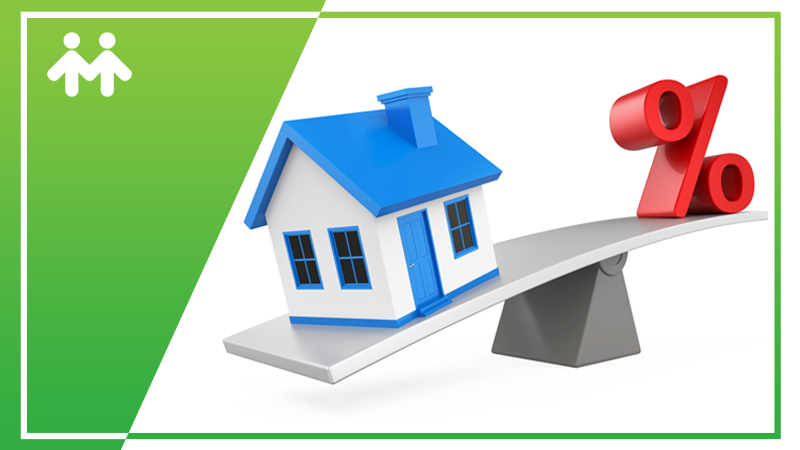
As the world turns its collective gaze towards 2024, the subject of mortgage rates takes center stage, casting a beam of speculation across the financial landscape. The question du jour is whether the upcoming year will bring about a downturn in mortgage rates or maintain a semblance of the status quo. In the style of Neil Patel’s unique blend of data-driven insights and approachable storytelling, let’s unpack the various elements that will influence the mortgage market. “Mortgage” is not merely a term but the cornerstone of the real estate sector, affecting millions of homeowners and potential buyers.
Economic Indicators: The Forecast Foundation
Embarking on this investigative journey, the starting point is the current economic indicators. Like a barometer for weather changes, inflation, GDP, unemployment rates, and consumer spending offer insight into the probable direction of mortgage rates. In a high inflation environment, the Federal Reserve might tighten monetary policy, resulting in increased rates to prevent the economy from overheating. On the flip side, an economic cooldown could see a policy easing with corresponding decreases in mortgage rates. Thus, understanding these indicators is crucial as we chart the course for 2024.
Federal Reserve Policies: The Guiding Star
The Federal Reserve stands as the guiding star in the mortgage rate galaxy. Its monetary policy decisions, particularly around the federal funds rate, have a gravitational pull on borrowing costs, including mortgage rates. A dovish stance, possibly in response to economic uncertainty or subdued inflation, may lead to a lowering of mortgage rates, offering relief to borrowers. Each announcement from the Fed will be eagerly dissected for signals of what’s to come in 2024.
Global Economic Influences: The Winds of Change
Our economic system is more interconnected than ever before, meaning global events can significantly sway domestic mortgage rates. International economic policies, trade disputes, and political unrest can create waves that reach American shores, impacting investor confidence and bond markets, which in turn affect mortgage rates. Should global investors seek refuge in the stability of U.S. Treasury bonds, mortgage rates might experience downward pressure. It’s essential to keep a weather eye on the global economic horizon as we consider mortgage rate predictions for 2024.
Housing Market Dynamics: Supply and Demand
The heartbeat of the mortgage rate discussion is the supply-demand dynamic within the housing market. An imbalance here can lead to either an increase or decrease in mortgage rates. For instance, a surge in home buying activity without a corresponding increase in housing stock might push rates higher, whereas an oversupply could lead to competitive rate decreases to attract buyers. Observing these market forces will be critical in forecasting mortgage rate trends for 2024.
Technological Advancements: The Innovation Wave
The wave of technological advancement continues to crest, reshaping the mortgage industry landscape. Fintech’s march forward offers the promise of more efficient lending processes and competitive rates as lenders vie for tech-savvy customers in an increasingly digital marketplace. The penetration of these technological innovations will likely influence mortgage rates in 2024.
Regulatory Environment: Charting the Course
Just as sea charts guide ships, regulatory policies shape the path of mortgage rates. Changes in housing market regulation or financial oversight can either constrict or loosen the tides of mortgage lending, directly influencing rates. Those with their hands on the wheel of homebuying will need to navigate these regulatory waters carefully as they plot their course for 2024.
Consumer Sentiment: The Human Element
Lastly, the sentiments and behaviors of consumers provide a window into the soul of the mortgage market. If prospective homebuyers are optimistic, reflected in robust mortgage application numbers, this sentiment can stabilize or potentially lower rates. Conversely, market apprehension could lead to higher rates as lenders compensate for perceived risks. As such, consumer sentiment is a powerful gauge in predicting mortgage rate movements.
Conclusion: Setting Sail for 2024
As we set sail toward 2024, we must acknowledge that predicting mortgage rates involves navigating through a complex interplay of economic conditions, policy decisions, global influences, housing market dynamics, technological advancements, and consumer behaviors. In true Neil Patel fashion, it’s about analyzing the data, understanding the market, and connecting with the audience — prospective homebuyers looking to make one of the most significant financial decisions of their lives.
While we cannot forecast with absolute certainty, an informed, analytical approach will offer the clearest view of what 2024 might hold for mortgage rates. Whether they decrease, hold steady, or increase, preparing for all scenarios is the hallmark of a savvy homebuyer and investor. As we look to the future, let’s stay informed, stay flexible, and stay ready to adapt to whatever the mortgage market has in store.


